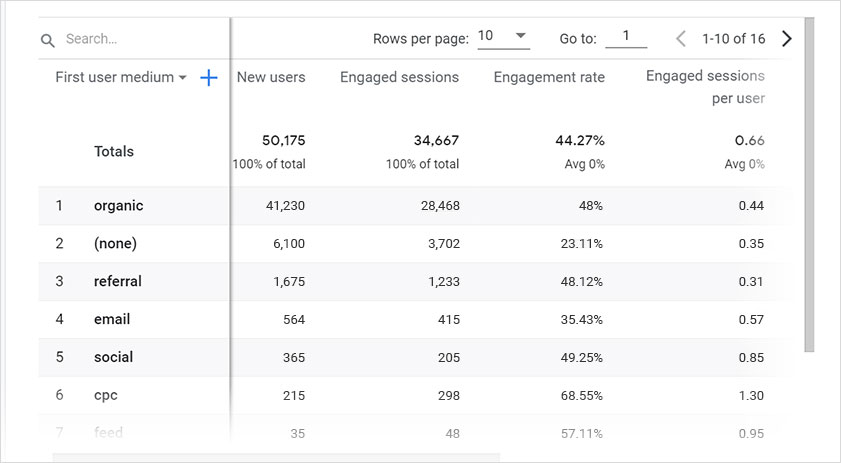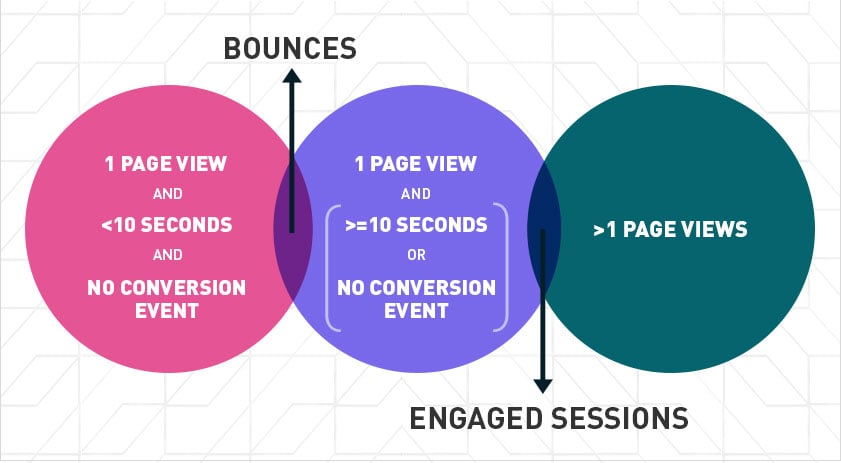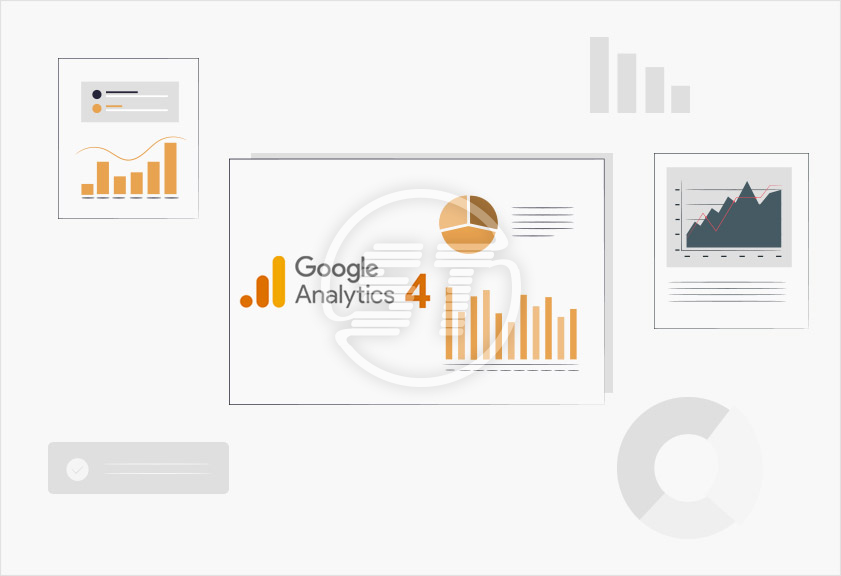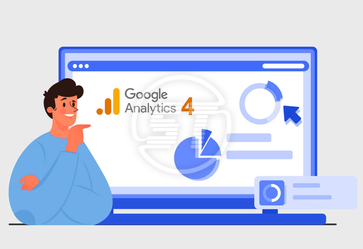Have you started using Google Analytics 4? What changes you are witnessing with this new analytics measurement tool?
Google Analytics has changed the overall way to measure the website performance, for sure. But one major change is the bounce rate metric. Websites were relying on bounce rate metrics to measure the traffic and their engagement on the pages to scrutinize their performances. However, now with GA4, you will not be able to see bounce rate in your analytics reports.
Where have they gone? Now how will you measure this critical element to improve the website performance?
This article will help you to know about bounce rate alternatives in Google Analytics 4.
What is bounce rate and how it gets influenced?
The bounce occurs when a visitor lands on your website but doesn’t spend time and leaves the page in a few moments. The bounce rate is the number of bounces divided by the total number of visitors at a specific time.
This is how you used to get reports about website performance until now. But now in Google Analytics 4, instead of bounce rate, you have a new metric named Engagement rate. Explore the other difference between Universal Analytics and Google Analytics 4.
Mostly, user bouncing depends on the event structure used by the site, and it varies site to site, no fixed formula. For example, if you have enabled scroll tracking as interaction hit, then if a user will visit your website and if he/she will scroll to the bottom of the page, but will not convert, it won’t count as bounce. Because scrolling was count as an interaction by GA. Whereas, if user enters and read the content, also sees some other video content, but you have not enabled video tracking as interaction, the session will report as a bounce in Google Analytics.
These are event tracking examples, where you are supposed to set events to count as interactions and from these two examples, you can understand that bounce rate is often misleading.
Now, let’s see how session timeout impacts bounce rate. Only one page view sessions are considered as bounce if session timeout occurs, and user don’t take other actions meanwhile. For example, if a user is perusing the content for a longer span but not taking any other action till session timeout, it will get considered as bounce. The default session timeout is 30 minutes; however, it can be customized.
Where did bounce rate go in Google Analytics 4?
Google Analytics 4 is not like Universal Analytics. It is more action and event-oriented version. Therefore, in Google Analytics 4, instead of bounce rate, you have a new metric called Engagement rate.
As an analyst, you know that the bounce rate was not as effective and useful as it was supposed to be, because in some cases, users used to have successful sessions, but reports were showing bounces. Also, in single-page applications, it was not making sense.
Google Analytics 4 joins data from mobile and web applications in a simple interface and provides you with accurate useful reports, thereby you can measure a wide range of user experiences.
Engagement rate in Google Analytics 4
Engagement rate is measured by the session in which the user has done a few activities like, actively engaging themselves with the application or website for at least 10 seconds, firing a conversion event, or firing two or more page views.
Following are the metrics based on engagement sessions.
- Engagement rate = engaged sessions / total sessions
- Engaged sessions per user = engaged sessions / users
- Engagement time = sum (engagement time)

Does engagement rate really replace bounce rate?
Engagement rate tells you how well your users are engaged with your website or application just like bounce rate in universal analytics case. Additionally, it is useful in places where the bounce rate was not that much high. For instance, single-page applications, mobile apps, and content sites like blogs and news portals.
The websites or application’s engagement rate will always be greater than the inverse of the bounce rate. The reason behind this is, you can consider a session with at least a two-page view as an engagement session and so do other sessions with a minimum of 10 seconds duration that is otherwise considered as a bounce.
If your visitors are spending more time on the application and giving you conversions, then you find a noticeable increase in engagement rate. The engagement rate will only decrease if the users will come on the website and in no time they leave.
GA4 will be everywhere in sometime just like UA and then bounce rate has to get replaced by engagement rate. Best way to get adapted with this new metric is to setup a parallel GA4 property and start collecting data for engagement rate. And then you can compare both engagement rate and bounce rate and decide which information is accurate. This will help you in smooth transition from bounce rate to engagement rate.

Engagement rate is the improvement for bounce rate, so that users can get unerring information about page engagement. And due to its precise reports, you can consider engagement rate as one of the effective metrics Google Analytics 4 has come up with. If you have migrated to Google Analytics 4, it must require using engagement rate.
Wrapping Up
Analysts and marketers are using bounce rates for a longer span; therefore, it is hard for them to switch to this new metric. But Google has changed it for a reason and the reason is more accurate data that will be beneficial for your website eventually.
It is your choice, if you still want to depend on bounce rate despite the alternative given by Google Analytics 4, you can. Google Analytics 4 doesn’t map the bounce rate metric directly, you can reproduce the old bounce rate metric by using Google BigQuery. The information contained in it will help you to calculate the bounce rate approximately.
Though it is highly advisable to use the engagement rate to get precise and exact information, you can use bounce rate with keeping the Universal Analytics property as it is for comparison till July 2023.
Establishing a baseline of your website’s performance is essential for understanding the effectiveness of your ongoing SEO and digital marketing efforts. Our team will help you to deliver every insight into the analytical part of your business by implementing the latest tools like Google Analytics 4. We offer tailor-made SEO services to give you the competitive thrust and out-hustle your business rivals in getting more qualified traffic, leads, and conversions. Get in touch with us at hello@skynettechnologies.com or submit the following request free quote form to know more.


